OpenEoX: End-of-Life (EoL) and End-of-Support (EoS)
Already a member?
Access the OpenEoX community workspace here
Standardizing the language for managing end-of-life information for commercial and open source software and hardware.
The OpenEoX TC aims to standardize the way End-of-Life (EoL) and End-of-Support (EoS) information is exchanged within the software and hardware industries. Covering both vendors and open-source maintainers, OpenEoX strives to provide a transparent, efficient, and unified approach to managing product lifecycles.
In today’s fast-paced world of technological advancements, it’s crucial for businesses and individuals to stay informed about the lifecycle status of the products they rely on. OpenEoX addresses this need by offering a common framework that simplifies the process of managing and sharing EOL and EOS information across the industry.
The OpenEoX TC is dedicated to advancing the OpenEoX standard to meet evolving industry demands. Its key objectives include developing and maintaining the OpenEoX standard to ensure its ongoing relevance and applicability. The committee will also facilitate interoperability and compatibility across diverse platforms and industries, creating a seamless ecosystem for its application.
To encourage widespread adoption, the OpenEoX TC will promote the standard’s use among both vendors and open-source maintainers, ensuring its value across the technology landscape. Additionally, the TC will provide technical expertise and guidance to support the application and evolution of OpenEoX, fostering innovation and practical implementation.
The primary deliverables of the OpenEoX TC include two critical resources. The first is the OpenEoX Standard, a comprehensive specification that defines standardized processes and schema. The second is the OpenEoX Implementation Guide, a practical handbook designed to help industry stakeholders effectively adopt and integrate the standard into their systems. Together, these deliverables will drive consistency and usability for OpenEoX across various domains.

OpenEoX Sponsors
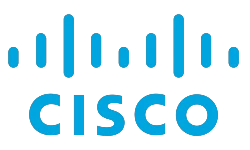
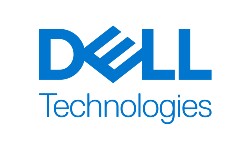
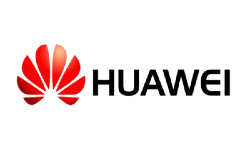

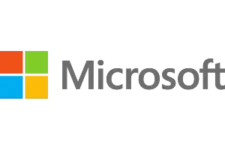
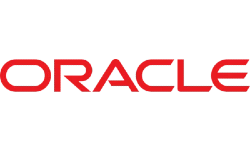

TC Leadership
Chairs:
Justin Murphy, DHS CISA
Omar Santos, Cisco
Secretary:
Stefan Hagen

“Huawei is proud to join the OpenEoX project and support the establishment of standardized software and hardware end-of-life and end-of-support programs. We understand the impact of rapid tech development on the industry and are committed to working with stakeholders to explore a standardized approach to EOL and EOS programs. This will streamline processes, reduce confusion, and ensure a smooth transition for consumers. We look forward to contributing to the health and sustainability of the entire hardware and software ecosystem!”
Martin Xie,
Director of Huawei Cybersecurity Transparency Center

“Standardizing how the industry performs End of Life/End of Support for developed software/services and their related direct and transitive dependencies is critical to the evolution of end-to-end software supply chain security. Microsoft is proud to contribute to this work, which achieves even more transparency in better-made software while further building trust with more informed consumers.”
Brendan Burns,
CVP, Azure OSS Cloud Native, Microsoft

“As an open source solutions provider with a broad product portfolio, consistently communicating lifecycle information to our customers and partners can pose a challenge. With OpenEoX, Red Hat will be able to streamline that process, providing users with a more accurate and reliable view over the lifecycle of their technologies. This information, integrated with other components of the vulnerability assessment process, will complement data like VEX and SBOMs and help our users address and remediate potential security issues more quickly and efficiently.”
Pete Allor,
Senior Director, Red Hat Product Security

“It’s crucial for people to stay informed on the lifecycle status of the products and open-source software they rely on. OpenEoX addresses this challenge by providing a common framework that simplifies the process of managing and sharing End-of-Life and End-of-Support information across the industry. When I started the original work in OpenEoX, I recognized that for it to truly transform the industry, it needed to be advanced in OASIS Open.”
Omar Santos,
Co-Chair of OpenEoX and Distinguished Engineer, Security & Trust, AI Security Research and Operations at Cisco Systems

“OpenEoX will help redefine the landscape of vulnerability management by streamlining the oversight of product lifecycles. This empowers organizations to proactively address security issues through efficient patching and product upgrades. The machine-readable OpenEoX standard will pave the way for automation and integration with tools such as vulnerability scanners and SIEM systems. It will be able to offer a comprehensive overview of an organization’s security posture, contributing to more informed decision-making and enhanced risk mitigation. We look forward to continuing to work with OASIS Open and the broader vulnerability management community to build a path toward more efficient, automated and prioritized vulnerability management.”
Justin Murphy,
Co-Chair of OpenEoX and Vulnerability Disclosure Analyst at the U.S. Cybersecurity and Infrastructure Security Agency (CISA)
Frequently Asked Questions
Reducing Cybersecurity Risk
One of the primary benefits of the OpenEoX is its ability to reduce cybersecurity risk. By having a standardized EOL and EOS policy across vendors and open-source maintainers, companies can quickly identify when products are no longer supported or updated. This knowledge enables organizations to retire or replace outdated, unsupported products that may be more susceptible to security vulnerabilities. As a result, companies can maintain a more secure IT environment, reduce the risk of data breaches, and better protect their assets.
Enhancing Vulnerability Management
The OpenEoX can also significantly improve vulnerability management. With a standardized and machine-readable format for EOL and EOS information, organizations can automate the tracking of product lifecycles. Automation allows for real-time monitoring and alerts, ensuring that IT teams are informed about upcoming EOL and EOS dates. This timely information empowers organizations to proactively address potential security vulnerabilities by patching or upgrading affected products before they become problematic.
Enabling Automation and Integration
The machine-readable nature of the OpenEoX standard opens the door to automation and integration with other tools and platforms. For instance, vulnerability scanners and security information and event management (SIEM) systems can incorporate OpenEoX data to provide more accurate and up-to-date information about product lifecycles. This integration results in a more comprehensive understanding of an organization’s security posture, ultimately allowing for better decision-making and risk mitigation.
The OpenEoX TC welcomes participation from anyone who wants to contribute to advancing standards for End-of-Life and End-of-Support practices, including:
· Software and hardware vendors looking to align their product lifecycle management with industry standards.
· Open-source maintainers interested in establishing consistent EOL and EOS practices for their projects.
· Technology consultants seeking to contribute their expertise and help shape global standards.
· Business stakeholders reliant on technology products, including decision-makers in organizations dependent on secure and efficient technology solutions.
· International, federal, and local government organizations aiming to support interoperability and best practices in technology management.
· Regulatory bodies in the software and hardware industries focused on ensuring compliance and promoting transparency in the tech ecosystem.
In addition to improving cybersecurity and vulnerability management, the OpenEoX offers several other benefits:
Simplified Product Management: A standardized approach to EOL and EOS policies simplifies the process of managing product lifecycles for software providers, vendors, and suppliers. This efficiency leads to reduced administrative overhead and improved customer satisfaction.
Enhanced Customer Confidence: By adopting industry-wide standards for EOL and EOS programs, software providers can demonstrate their commitment to transparency, customer support, and best practices. This transparency builds trust and confidence among customers, leading to increased loyalty and long-term business relationships.
Facilitated Transition: A standardized EOL and EOS program can help ensure a smooth transition for customers as they migrate to new technology solutions. This seamless transition results in reduced downtime, fewer support issues, and a better overall experience.
Organizations often struggle with inconsistent and unreliable End-of-Life (EOL) and End-of-Support (EOS) information, which can lead to difficulties in identifying unsupported products, increased cybersecurity risks, and inefficient lifecycle management. These challenges are compounded by the lack of standardization across vendors and open-source projects.
OpenEoX addresses these issues by providing a standardized approach to EOL and EOS information. This helps open-source maintainers and vendors deliver more accurate and reliable support to their users while enabling organizations to quickly identify unsupported products. By unifying existing frameworks such as Software Bill of Materials (SBOMs), the Common Security Advisory Framework (CSAF), and Vulnerability Exchange (VEX), OpenEoX reduces susceptibility to vulnerabilities and fosters better product lifecycle management across the technology ecosystem.
The CSAF TC’s mailing list archive, used by members to conduct Committee work, is available here. TC membership is required to post to this list. TC members are automatically subscribed.

New Members Welcome
Whether you want to actively contribute in decision-making or just observe progress from the inside, you will need to be an OASIS member.
If your employer is already on our current member list, submit this request form to be added to the TC Roster. If not, find out how to join OASIS.
Non-members may monitor the mailing list archives online, view approved documents, and provide feedback to our comments list. Contact Us for more information.


